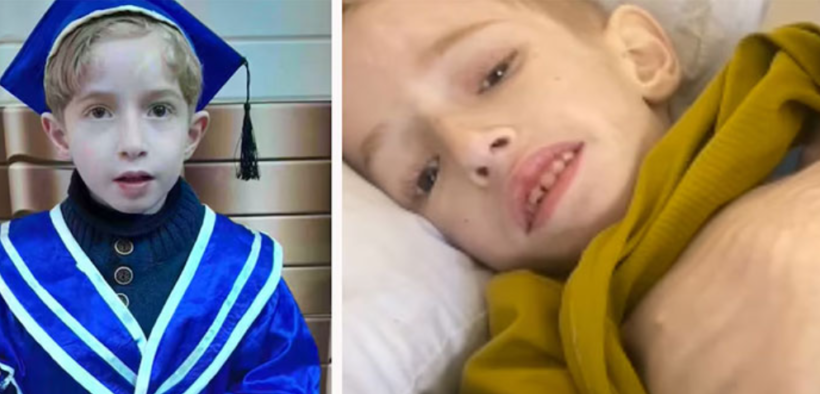Facing the Human Cost Fadi’s Struggle Amidst Gaza’s Crisis

Fadi’s spindly legs can no longer support him enough to walk.
Photographs of Fadi from before the war show a smiling, healthy-looking child, standing in blue denim next to his taller twin with his hair brushed. A short video clip shows him dancing at a wedding with a little girl.
Fadi suffers from cystic fibrosis. Before the conflict, he was taking medicine that his family could no longer find and eating a carefully balanced variety of food no longer available in the Palestinian enclave, according to his mother Shimaa al-Zant.
“His condition is getting worse. He is getting weaker. He keeps losing his ability to do things,” she said in a video obtained by Reuters from a freelancer. “He can no longer stand. When I help him stand up, he falls straight away.”
Israel’s ground and air campaign
More than five months into Israel’s ground and air campaign, launched in response to Hamas’ Oct. 7 attack, there are widespread shortages of food, medicines, and clean water in Gaza, doctors and aid agencies say.
The Kamal Adwan hospital, caring for Fadi, had also treated most of the 27 children the health ministry in Hamas-run Gaza says have died of malnutrition and dehydration in recent weeks.
Others died in Gaza City’s al-Shifa Hospital, also in the north, the ministry said, and in the southernmost city of Rafah, where the U.N. relief agency says over 1 million Palestinians have sought refuge from Israel’s offensive.
Reuters saw 10 badly malnourished children during a visit last week to the al-Awda health center in Rafah, arranged with nursing staff who gave the news agency unimpeded access to the ward. Reuters was not able to independently verify the deaths reported by the ministry.
Without urgent action, famine will hit between now and May in northern Gaza, where 300,000 people are trapped by fighting, the world’s hunger watchdog, the Integrated Food Security Phase Classification (IPC), said in a review on Monday.
The review’s most likely scenario said “extremely critical levels of acute malnutrition and mortality” were imminent for more than two-thirds of the people in the north. The IPC is made up of U.N. agencies and global aid groups.
Israel’s COGAT
Israel’s COGAT, the military body that handles aid transfers to Gaza, did not specifically respond to Reuters questions about the deaths of children from hunger and dehydration. It said Israel put no limits on the amount of aid that can enter.
Following the IPC review, Israeli government spokesperson Eylon Levy posted on X that the number of food trucks had increased in March and that Israel was taking measures to bolster “delivery efforts” to the north.
“It’s a bad assessment, based on an out-of-date picture,” he said of the review.
USAID Administrator Samantha Power said in a public statement that the IPC assessment marked “a horrific milestone.” She called on Israel to open more land routes and operate crossings at full capacity.
In response to a question from Reuters about the IPC report, senior Hamas official Sami Abu Zuhri said Israel’s Prime Minister Binyamin Netanyahu was “defying the world and pursuing the killing of the Palestinian people in Gaza by bombs and starvation.”
U.S. authorities did not immediately respond to a request for comment.
U.N. aid agencies have said “overwhelming obstacles” to moving aid to the north of Gaza will only be overcome with a ceasefire and the opening of border crossings closed by Israel after Oct. 7.








